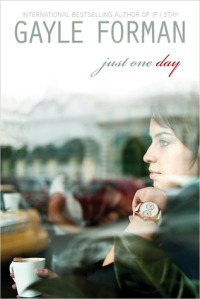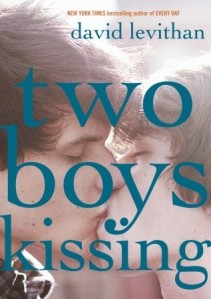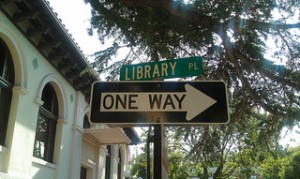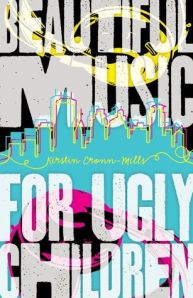
Allyson Healey has always followed the rules, living according to her parents’ carefully constructed plans. But while on a European tour after her high school graduation, Allyson meets Willem, a Dutch actor in an underground Shakespeare performance troupe. In a moment of unprecedented daring, Allyson joins Willem on a trip to Paris for a single day. But after a thrilling romantic adventure, Allyson wakes up the next morning–alone. She returns to her dutiful life, drifting through her first semester of college depressed and uninterested. Unable to shake the memory of her day with Willem—and of the bolder, more vibrant person she became in his company—Allyson returns to Paris determined to find him. Along the way, she discovers dreams outside her parents’ expectations and falls in love with life in whole new way.
From its basic summary Gayle Forman’s newest novel might sound like than a simple European travel adventure or a tale of whirlwind romance. However, it is in fact more complicated–and satisfying–because it both combines aspects and defies expectations of both. Just One Day is a delightful novel chronicling a young woman’s journey of self-discovery and coming of age–through Shakespeare, madeleines, youth hostels, guidance counselors, and new, unexpected friendships.
Just One Day stands out among recent publications for a variety of reasons. First, it’s a great example of books that might fall into this nebulous, new category of ‘new adult fiction’–stories about young adults in that strange transitional world after high school, sometimes in college and sometimes just beyond college. As many of my older high school students are fast approaching this next threshold in their lives, novels focusing on that transition are especially appealing to them.
Second, the characters (especially our protagonist Allyson) are dynamic and complex; they show substantial but believable growth in the narrative. Allyson is, rightfully, the character that changes and develops most substantially here; she grows from a obedient and somewhat passionless daughter and student into a confident and adventurous young woman. In the process, she is alternatively prickly, vulnerable, depressed, self-absorbed, confused, brave, and unsure. The reader might not always like Allyson but I found myself loving and sympathizing with her the whole journey. I also enjoyed the great cast of supporting characters, especially Allyson’s old and new friends. Many of the supporting characters (especially adults like Allyson’s parents) revealed their three dimensionality and humanity as the narrative progressed; as Allyson learned to understand herself better, she began to understand others (like her overbearing mother) more complexly.
Willem remains the most mysterious and least developed character int he novel–for good reason, I think. Allyson catches glimpses of his unhappiness or loneliness underneath his charming demeanor during their day together; during her search for him, she also begins to piece together more information about him as a real, flawed human (rather than a romantic idea). However, when the novel ends, Allyson and the reader are still mostly in the dark about Willem. Since this book is the first of a duo (with the second focusing on Willem’s story), I felt intrigued rather than dissatisfied by this state of his character at the conclusion of the novel.
This third reason is very simple and based on a personal bias: I ‘m a total sucker for a good ‘rule-following girl goes to Europe and discovers her passions and true self’ story. There’s a reason this narrative is a bit of a trope in fiction. And in Just One Day, Forman uses this idea perfectly. On her first trip to Europe, Allyson meets the charming, free-spirited Willem and their one-day romance throws her whole, organized world off balance. While it appears that Allyson’s ensuing depression and disinterest in her new college life might be due to a broken heart, she soon realizes that while she can’t deny her strong emotions regarding Willem as a person, she’s really in love with the way she felt and acted during their day together. While finding Willem again might be her more concrete motivation in the second half of the novel, Allyson is truly searching for a more adventurous and authentic version of herself. And I was thrilled to go on that journey with her!
Finally, who doesn’t love a book promoting the magic of Shakespeare, the thrill of travel, and the power of following your interests to find your passion? I can’t wait to read Willem’s side of the story when the companion Just One Year comes out this fall!
Readalikes: I would hand Just One Day off to readers who enjoy realistic fiction, especially romances and travel stories; its wealth of historical and literary references would make it a good match for a bookish reader–especially one who usually prefers classics like A Room With A View or loves Shakespeare but frequently avoids contemporary realistic fiction. Additionally, it might pair up well with travel stories such as 13 Little Blue Envelopes by Maureen Johnson and Amy and Roger’s Epic Detour by Morgan Matson. Fan of other post-high school graduation tales of discovery (and sometimes romance) like Along for the Ride by Sarah Dessen or The Disenchantments by Nina LaCour might also be targets for this novel.
A definite 5/5 stars for me!
 Whew! It’s been a fairly disjointed reading day–I had to take breaks for everyday activities like showering and cooking as well as attendance at my school’s commencement ceremony. However, I did complete another novel and read a couple short stories in Diverse Energies.
Whew! It’s been a fairly disjointed reading day–I had to take breaks for everyday activities like showering and cooking as well as attendance at my school’s commencement ceremony. However, I did complete another novel and read a couple short stories in Diverse Energies. 






